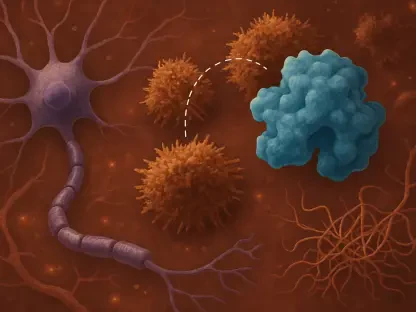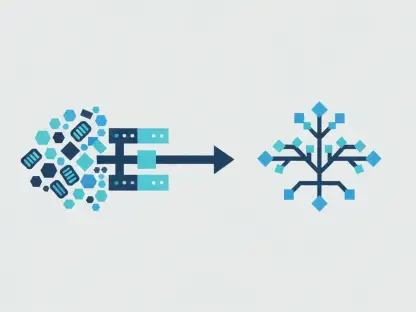The production of protein-based drugs is a cornerstone of modern medicine, offering treatments for a range of conditions from cancer to autoimmune diseases. Central to this process are Chinese hamster ovary (CHO) cells, which are widely used in the biotechnology industry for their ability to produce therapeutic proteins. However, despite their importance, CHO cells face significant challenges that limit their efficiency and increase production costs. Recent research has unveiled a groundbreaking strategy to overcome these obstacles, promising to revolutionize the field of biopharmaceutical production.
The Role of CHO Cells in Biopharmaceuticals
Importance of CHO Cells
CHO cells are indispensable in the production of protein-based drugs due to their ability to produce complex proteins that are essential for therapeutic applications. These cells are favored for their adaptability and high protein yield, making them a preferred choice in the biotechnology sector. However, the efficiency of CHO cells is often compromised by metabolic issues that hinder their productivity. One of the reasons CHO cells are so valuable is because of their capacity to produce proteins similar to those found in humans, which is critical for the efficacy of many pharmaceuticals. Nevertheless, despite their advantages, their metabolic rate and the resulting byproducts can create significant hurdles.
Another aspect where CHO cells are particularly useful is their stability in long-term cultures, which greatly benefits large-scale production processes. They can be genetically manipulated relatively easily, allowing for precise control over the kinds of proteins they produce. While their ability to produce human-like proteins adds immense value, the challenge of ensuring consistent and efficient yields remains. Despite their widespread use and inherent benefits, overcoming the obstacles related to metabolic byproducts is crucial for further enhancement of their productivity.
Challenges in Protein Production
One of the primary challenges in using CHO cells for drug production is their tendency to produce excessive amounts of lactic acid. This byproduct of cellular metabolism can be toxic, leading to cell death and reduced protein yields. The accumulation of lactic acid not only affects the viability of CHO cells but also increases the cost of drug production, making essential medications less accessible to patients. The excessive lactic acid production is particularly troublesome during high-activity phases when the cells are most productive. During these periods, not only does cell viability decrease, but the overall process becomes less efficient, raising the cost burden significantly.
Adding to these challenges is the complexity of maintaining an optimal environment for CHO cells. As the lactic acid builds up, it changes the pH of their surroundings, which can further exacerbate toxicity and inhibit cell growth. The traditional solution of frequent media changes to keep the pH stable and remove lactic acid proves costly and labor-intensive. These methods can only provide temporary relief and do not address the root cause. As the industry grows and demand for protein-based drugs increases, finding sustainable ways to enhance CHO cell productivity becomes more critical than ever.
Traditional Approaches and Their Limitations
Targeting Lactate Dehydrogenase
Historically, efforts to reduce lactic acid production in CHO cells have focused on inhibiting lactate dehydrogenase, the enzyme responsible for converting pyruvate to lactate. While this approach seemed promising, it often resulted in cell death, as lactate dehydrogenase is crucial for cell survival. This limitation has prompted researchers to explore alternative strategies to enhance CHO cell productivity. Attempts to eliminate or drastically reduce the activity of lactate dehydrogenase have been met with failure, making it clear that a more nuanced approach was required.
These traditional methods have shown that directly targeting an enzyme not only does not solve the issue but can lead to collateral damage, thus nullifying any potential progress in boosting cell productivity. As a result, scientists have been on the lookout for a new strategy that could strike at the heart of the problem without adversely affecting cell viability. The key challenge has been to identify other pathways or mechanisms that could be manipulated to achieve the desired reduction in lactic acid production while preserving the cell’s robust nature and production potential.
The Need for a New Strategy
Given the limitations of targeting lactate dehydrogenase, there was a clear need for a novel approach that could reduce lactic acid production without compromising cell viability. Researchers at the University of California San Diego, in collaboration with international partners, embarked on a mission to find a solution that would address this critical issue in biopharmaceutical production. Their endeavor focused on looking beyond lactate dehydrogenase to understand the broader genetic and metabolic networks involved in lactic acid generation.
The multidisciplinary team, leveraging advanced genetic tools and bioinformatics, aimed to map out the intricate web of genes and metabolic pathways that contribute to lactic acid production. By shifting the focus from a single enzyme to a network of genes, they hypothesized that it would be possible to significantly alter the metabolic output without destabilizing the cells. This new strategy promised to not only lower lactic acid levels but also potentially unlock higher yields of the desired proteins, thus offering a dual benefit of efficiency and cost reduction.
A Breakthrough in Genetic Engineering
Mapping the Gene Circuit
The research team, led by Nathan Lewis and Hooman Hefzi, shifted their focus from lactate dehydrogenase to a network of genes that regulate lactic acid production. By meticulously mapping out a gene circuit comprising five genes in CHO cells (and six in human cells), they hypothesized that disrupting this circuit could reduce lactic acid production without affecting cell growth or energy production. This intricate mapping involved detailed genetic analysis and a deep understanding of cellular metabolism, ensuring that the targeted interventions would yield the desired outcomes.
The team employed cutting-edge genomic editing techniques, such as CRISPR-Cas9, to make precise alterations within this gene network. Their detailed mapping allowed them to identify key regulatory points that, when disrupted, lead to significant reductions in lactic acid production. The hypothesis rested on the idea that a well-coordinated network of genes could be adjusted to fine-tune the metabolic outputs, avoiding the pitfalls encountered in previous enzyme-focused strategies. This systemic approach promised to provide more stable and efficient CHO cells, capable of higher protein yields.
Successful Genetic Modifications
The results of their genetic modifications were groundbreaking. The engineered CHO cells exhibited a complete halt in lactic acid production, without any negative impact on cell growth or energy levels. This significant achievement demonstrated that it is possible to eliminate the Warburg effect—a metabolic phenomenon associated with excessive lactic acid production—without hindering cell viability. This finding was crucial as it directly challenged the long-standing belief that the Warburg effect was essential for cell proliferation and energy production.
Once the modifications were in place, the team tested the engineered cells for their ability to grow and produce therapeutic proteins. Not only did the cells thrive, but they also showed increased productivity, yielding higher quantities of crucial drugs like Herceptin and Rituximab. These pharmaceuticals are vital for treating breast cancer and lymphoma, respectively. The modified cells also produced other important therapeutic proteins, such as Enbrel and erythropoietin, showcasing their broad applicability. The success of these genetic modifications opened new horizons for protein-based drug production, making it possible to achieve higher yields and reduce costs significantly.
Implications for Drug Production
Enhanced Protein Yields
The modified CHO cells showed enhanced growth and significantly increased yields of several important pharmaceutical proteins, including Herceptin and Rituximab, which are used in treatments for breast cancer and lymphoma, respectively. Additionally, the engineered cells produced other therapeutic proteins, such as Enbrel (for rheumatoid arthritis and psoriasis) and erythropoietin (which stimulates red blood cell production). This enhanced productivity means that more patients can have access to these life-saving medications at potentially lower costs.
With higher efficiency in protein production, the time and resources required for manufacturing these drugs can be significantly reduced. This efficiency not only lowers the cost of production but also allows for quicker response times in meeting market demands, particularly for critical conditions. The increased yield translates directly to better scalability, making it feasible to produce large quantities of therapeutic proteins without a corresponding increase in production complexities. This breakthrough ensures that the biopharmaceutical industry can keep pace with growing healthcare demands and provide essential treatments more reliably and affordably.
Industrial-Scale Compatibility
One of the most promising aspects of this research is the compatibility of the “Warburg-null” CHO cells with existing industrial-scale cell line development processes. This means that the highly productive cells can be seamlessly integrated into current manufacturing frameworks, potentially transforming the biomanufacturing industry by reducing production costs and increasing the availability of life-saving therapies. The compatibility ensures that this new approach can be quickly adopted without the need for extensive overhauls to existing infrastructure.
This integration is crucial because it allows pharmaceutical companies to take advantage of these advancements without incurring prohibitive costs. By maintaining operational continuity, the industry can transition smoothly, ensuring that the benefits of the newly engineered CHO cells are realized promptly. The ability to enhance productivity while fitting into current systems means that the therapeutic proteins can be produced at a larger scale, with fewer resources, ultimately making these therapies more accessible to a broader population.
Redefining the Warburg Effect
Challenging Long-Standing Assumptions
The study’s findings challenge the traditional understanding of the Warburg effect, a concept first identified by Otto Warburg in the context of cancer cell metabolism. The Warburg effect describes a shift in cell metabolism that leads to excessive lactic acid production, which was believed to be critical for cell proliferation and energy production. The research suggests that this metabolic pathway is not as essential as previously thought, opening new avenues for biopharmaceutical production. This paradigm shift encourages a reevaluation of other long-held beliefs about cellular metabolism and its impacts on drug production.
By proving that CHO cells can thrive without lactic acid production, the researchers have set the stage for further exploration of alternative metabolic pathways that could be exploited for improving production efficiencies. This finding not only impacts CHO cells but potentially broadens the scope to other cell types used in biomanufacturing. As scientists continue to challenge and investigate metabolic paradigms, the resultant knowledge can facilitate even more innovative approaches to drug production, further benefiting the field of biotechnology.
Future Research Directions
The research team continues to explore additional genetic modifications that could further enhance the productivity of CHO cells. By refining the drug manufacturing process, they aim to revolutionize the production efficiency of protein-based drugs, making treatments more accessible and affordable on a global scale. Building on their successful elimination of the Warburg effect, the team is now investigating other metabolic processes and gene circuits that could be fine-tuned for even greater yields.
Future research may include detailed studies on the long-term stability of these engineered cells in various production settings. Understanding how these cells perform over extended periods and under different conditions will be vital for maximizing their potential. Additionally, exploring other cell lines and applying similar genetic interventions could expand this breakthrough’s applicability across various areas of biopharmaceuticals. The continuous quest for optimization underscores the commitment to making groundbreaking therapies more available and cost-effective worldwide.
Conclusion
The production of protein-based drugs is pivotal in modern medicine, providing treatments for a variety of conditions, including cancer and autoimmune diseases. At the heart of this production are Chinese hamster ovary (CHO) cells, which are extensively utilized in the biotech industry due to their capability to generate therapeutic proteins. Nonetheless, despite their critical role, CHO cells encounter substantial challenges that hinder their efficiency, thereby escalating production costs. Recent studies have uncovered an innovative approach to address these limitations, which holds the promise of transforming the realm of biopharmaceutical manufacturing. This groundbreaking strategy aims to enhance the efficiency and reduce costs associated with CHO cell production, potentially leading to more accessible and affordable treatments. This development could mark a significant advance in the field, offering new hope for improved medical therapies and outcomes. By overcoming existing obstacles and streamlining protein-based drug production, this research may pave the way for a new era in biotechnology and medicine.









